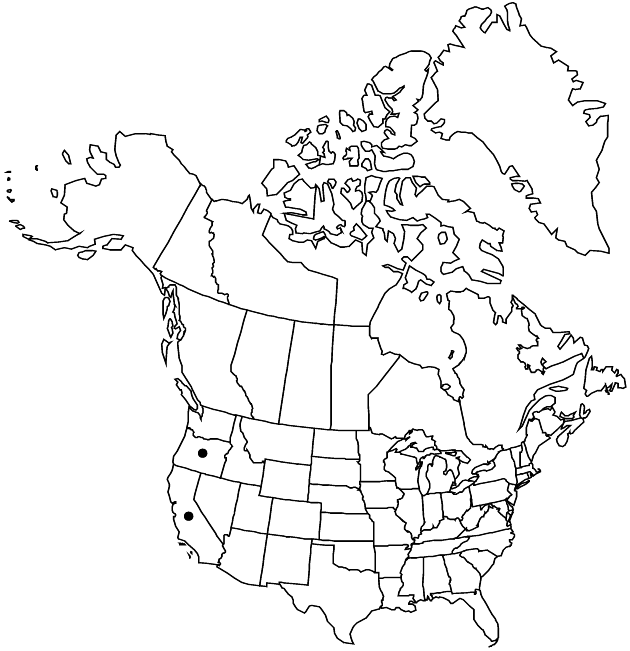Arnica spathulata
Pittonia 3: 103. 1896.
Common names: Klamath arnica
Endemic
Synonyms: Arnica eastwoodiae Rydberg Arnica spathulata subsp. eastwoodiae (Rydberg) Maguire Arnica spathulata var. eastwoodiae (Rydberg) Ediger & T. M. Barkley
Plants 15–45+ cm. Stems simple or branched. Leaves 3–5 pairs, sometimes crowded toward bases (basal leaves often persistent on sterile rosettes); petiolate (petioles mostly broadly winged, 1–9 × 0.2–1.5 cm); blades elliptic-ovate to spatulate, 2–8 × 1–4 cm, margins subentire to mostly irregularly dentate, apices acute, faces sparsely to densely villous, stipitate-glandular. Heads 1, or 3–9 (–25). Involucres turbinate-campanulate. Phyllaries 8–15, broadly to narrowly lanceolate. Ray-florets 0. Disc-florets 15–50; corollas yellow; anthers yellow. Cypselae black, 5–10 mm, sparsely stipitate-glandular; pappi white, bristles barbellate. 2n = 38, 76.
Phenology: Flowering Apr–Jul.
Habitat: Usually serpentine soils, open, dry oak–conifer forests, disturbed areas
Elevation: 200–1500 m
Discussion
Selected References
None.
Lower Taxa
None.
... more about "Arnica spathulata"
yellow +
introrse +
connate +
herbaceous +
acute +
scarious +
absent +
hirsute +
papillate +
continuous +
decurrent +
elliptic-ovate;spatulate +
winged;ribbed;winged;ribbed +
1;15 +
stigmatic +
barbellate +
6;80 +
absent +
Klamath arnica +
zygomorphic +
yellow +
monomorphic +
black +
dimorphic +
stipitate-glandular +
5mm;10mm +
staminate +
straight +
scabrellous +
distinct +
proximal +
1;5 +
bisexual +
dispersed +
singly +
discoid +
indeterminate +
3;9 +
surrounding +
turbinate-campanulate +
petiolate +
crowded +
deltate +
2-carpellate +
inferior +
attached +
anatropous +
white +
persistent +
fragile +
falling +
aristate +
fine +
tough +
thick +
absent +
connate +
persistent +
distinct +
falling +
unequal +
Pittonia +
1896 +
pistillate +
absent +
fertile +
epaleate +
convex +
fibrous +
distinct +
exalbuminous +
modifed +
Endemic +
alternate +
erect +
2-branched +
papillate +
Arnica spathulata +
Arnica +
species +
shorter +
longer +
perennial +
